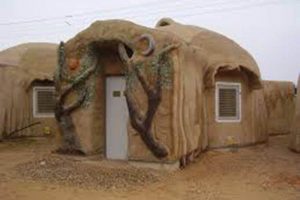Finding Nature and Community in Israel’s Eco Kibbutz
Israel’s seemingly barren and inhospitable desert is an unlikely place for a conglomeration of eco villages. Yet they are dotted across the most isolated places in the southern stretches of the Holy Land beyond the eerily magnificent Dead Sea.
These villages are kibbutz, close-knit communities where residents share similar objectives. And several kibbutz found along the highways that stretch from the Dead Sea to Israel’s southernmost city of Eilat are involved in renewable energy projects and ecological living. They feature photovoltaic solar arrays, algae farming for use as a biofuel, organic gardening projects, wetland creation for migratory birds and alternative building projects, to name but a few. Yet it is the organic food and low-impact living set amidst the magnificence of the dramatic desert land that most appeals to eco-tourists.
Life in the Desert
The first kibbutz was founded by Prime Minister David Ben-Gurion, who once said “The future of Israel lies in the Negev [Desert].” Now that same kibbutz surrounding tranquil Ein Avdat national park features organic vineyards, luxurious eco-huts, gourmet foods made from locally sourced products and organic wine tastings. Nahal Boker Farm, an organic vineyard that also grows organic olive trees and pomegranates, offers rustically elegant eco-accommodations from lodges to group tents. Carmey Avdat Farm features cabins tucked into the desert hillsides, fruit trees that guests can pick and garden pools.
Engage and Unwind
 Kibbutz Lotan’s remote location on Route 90 allows visitors the opportunity to experience the thriving wildlife, varied flora and Bedouin culture of the surrounding region. Within the kibbutz, visitors can take courses on alternative building and nature- or bird-watching, and join workshops on creative recycling, organic gardening and peace building. And guests can enjoy water-based shiatsu massages called “watsu,” reflexology and yoga.
Kibbutz Lotan’s remote location on Route 90 allows visitors the opportunity to experience the thriving wildlife, varied flora and Bedouin culture of the surrounding region. Within the kibbutz, visitors can take courses on alternative building and nature- or bird-watching, and join workshops on creative recycling, organic gardening and peace building. And guests can enjoy water-based shiatsu massages called “watsu,” reflexology and yoga.
In the same region, Kibbutz Neot Semadar is a manmade oasis. There, they’ve developed high-yield organic farming techniques including water recycling and fertilization production, and they produce a wide selection of fruits, vegetables, herbs, spices, wine grapes and dairy products. The kibbutz offers informative tours of the picturesque surroundings—including a fairy tale-like pink-and-aqua Art Center designed and constructed by residents that houses workshops for pottery, jewelry-making, stained glass and woodwork.
Getting Gritty
Eco-lodges and Bedouin-style khans (tents) can also be found across the desert, where communal living, meditation, dance, art and organic home-cooking provide for a genuine back-to-nature experience. In Desert Days Eco Lodge in the Negev’s Arava valley, visitors stay in one of seven eco-lodges built from straw and homemade mud bricks, eat communally at the central Desert Khan inn and go for dips in both a freshwater and mud pool.
Israel’s desert is not all golden sand dunes scattered with lush oases that we may associate with the Middle East. It’s a harsh landscape of craggy rocks, deep rugged valleys and dusty soils. Yet those who call the kibbutz here home live life to a different tune than their fellow kibbutzniks across the country. A sense of collective industriousness permeates in harmony with the landscape and environment. The kibbutz was once an idyllic concept that drew volunteers from around the world. With all the renewed interest in reconnecting with nature—and one another—it may yet be again.

